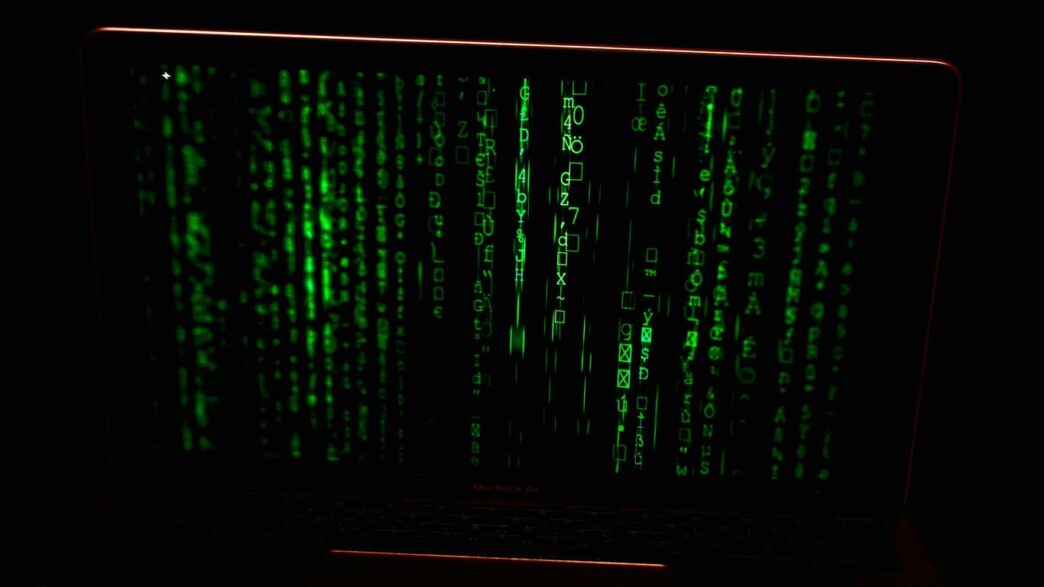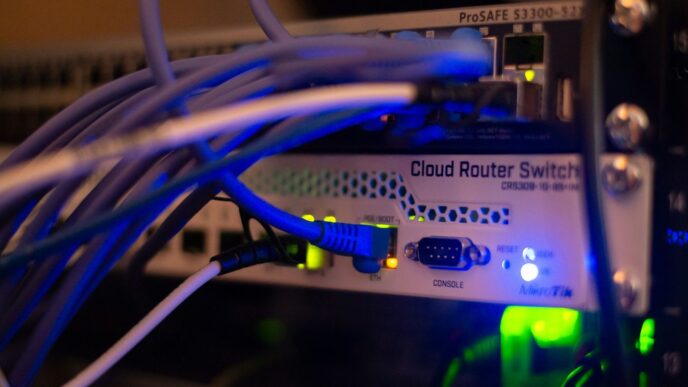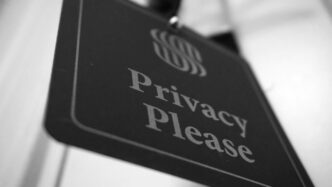There’s been a lot of talk lately about a big data leak involving a company called National Public Data. It’s kind of confusing because most people hadn’t even heard of them before, and now there are all these websites popping up, like npdbreach.com, claiming to help you figure out if your information was part of it. So, is npdbreach.com legit, and what does all of this mean for you? Let’s break it down.
Key Takeaways
- National Public Data (NPD) is a data aggregator that collects and sells personal information, and it suffered a significant data breach.
- Websites like npdbreach.com have been created to help individuals check if their data was compromised in the breach.
- The breach exposed sensitive personal information, including names, addresses, and Social Security numbers, for millions of people.
- While checking services like npdbreach.com can be helpful, it’s important to be wary of fraudulent websites that may try to steal your information.
- To protect yourself, consider freezing your credit, monitoring financial accounts closely, and being cautious of phishing attempts.
Understanding the National Public Data Breach
So, what exactly is this National Public Data breach we’re hearing so much about? It’s a bit complicated, honestly. We’re not talking about a single, neat package of stolen information like you might see with some other breaches. Instead, it’s more like a messy situation involving a company called National Public Data (NPD), which is a data aggregator. Basically, they collect and sell large amounts of personal information. Think names, addresses, Social Security numbers, and more, all gathered from various public records and other sources. This incident has brought a lot of attention to how data brokers operate and the security risks involved.
What is National Public Data?
National Public Data, also known as NPD, is a company that acts as a data broker. They gather personal information from a wide range of sources. This includes things like public records, court documents, and even social media. They then compile this data and offer it as a service to others, like background check websites, investigators, and app developers. It’s a business model that relies on having vast amounts of personal details on hand. They claim to provide services for criminal records and background checks, among other things.
The Scale of the Data Breach
The numbers thrown around regarding this breach are pretty staggering, though it’s hard to get a perfectly clear picture. We’ve seen reports of billions of records being involved. Some sources mention figures like 2.9 billion records, while others talk about terabytes of data. It’s a lot, and it’s not entirely clear if all these numbers refer to the same event or different data sets that have surfaced. What is clear is that a massive amount of personal information has been exposed, making it one of the larger incidents we’ve seen. The exact size and scope are still being pieced together, which adds to the confusion for many people wondering if their data is out there.
Timeline of Events
Pinpointing an exact start date for this whole mess is tricky. News about National Public Data and a massive data leak started popping up around April 2025. Early reports mentioned threat actors selling billions of records, with some attributing the initial leak to a group called "USDoD." Since then, different data sets have appeared, sometimes with different attributions, like a threat actor named "Fenice" or "Sxul." This has led to a bit of a confusing timeline, with data surfacing at different times and in different places. Legal action also began shortly after the news broke, with individuals notified by their identity-theft protection services that their data had been compromised. It’s been a developing situation for months now, with new information and data sets occasionally coming to light. You can find more details about the National Public Data breach and its implications.
Investigating npdbreach.com Legitimacy
So, you’ve heard about this big data breach involving National Public Data (NPD) and now you’re seeing websites like npdbreach.com pop up. It’s totally natural to wonder if these sites are on the level or just another scam trying to cash in on the chaos. Let’s break down what npdbreach.com is all about.
Purpose of npdbreach.com
Basically, npdbreach.com was set up as a tool for people to check if their personal information might have been exposed in the massive data leak attributed to NPD. After news broke about the breach, which some reports suggest involved around 3 billion records, various services emerged to help individuals figure out their potential involvement. This site is one of those services, aiming to provide a lookup function based on the data that was allegedly compromised. It’s meant to be a starting point for concerned individuals, though it’s important to remember that data aggregators like NPD often have a lot of information, and not all of it might be accurate or even relevant to the specific breach.
Who is Behind npdbreach.com?
According to some reports, npdbreach.com is operated by Atlas Data Privacy Corp. It’s not uncommon for companies specializing in data privacy or cybersecurity to step in during major incidents like this. They often have the technical know-how to create these kinds of lookup tools. However, it’s also worth noting that the source code for a related site, recordscheck.net, was found to have been developed by a firm in Pakistan called CreationNext.com. This same firm has a testimonial from Sal Verini, who is also linked to National Public Data. While this doesn’t directly implicate CreationNext in npdbreach.com, it does show a connection between the entities involved in the data breach and the services being offered in its wake. It’s always a good idea to do a little digging into who is running any service that asks for or displays your personal information.
Is npdbreach.com Safe to Use?
This is the million-dollar question, right? When you’re dealing with data breaches, caution is your best friend. npdbreach.com aims to be a legitimate service, but like any website that handles personal data, especially in the aftermath of a breach, there are risks. Here’s what to consider:
- Data Accuracy: The data itself that NPD held, and therefore what might be on npdbreach.com, could be outdated or incomplete. Some users have reported finding their email address on the site but with incorrect personal details attached.
- Phishing Concerns: Cybercriminals often create fake websites that look like legitimate breach notification sites to trick people into giving up more information. Always double-check the URL and be wary of any unexpected requests for sensitive data beyond what’s necessary for a basic lookup.
- Alternative Services: Other sites, like npd.pentester.com, also offer lookup services. It’s wise to compare information across multiple reputable sources if possible. For general protection, services like AnnualCreditReport.com are the official way to get your credit reports.
Ultimately, while npdbreach.com appears to be a genuine attempt to help people, exercising a healthy dose of skepticism is wise. If you’re worried about your data being compromised, consider taking proactive steps like freezing your credit file with the major credit bureaus. This is a more direct way to protect yourself from identity theft, regardless of the specific website you use to check for exposure.
What Data Was Compromised?

So, what exactly got scooped up in this whole National Public Data mess? It’s a pretty scary list, honestly. We’re talking about the kind of information that identity thieves dream about. The biggest concern is that sensitive personal details were exposed, potentially affecting millions of people.
Here’s a breakdown of what was reportedly compromised:
- Names: Full names of individuals.
- Addresses: Home and mailing addresses.
- Social Security Numbers (SSNs): This is the big one, as SSNs are often the key to unlocking other personal information and opening new accounts.
- Dates of Birth: Another common piece of information used for verification.
- Driver’s License Numbers: This can be used for identity theft and fraud.
- Email Addresses: Useful for phishing attempts and sending spam.
- Phone Numbers: Also used for phishing and unwanted contact.
- Credit Card Information: While not confirmed for everyone, some reports suggest this was also part of the leak.
It’s important to note that not every single record contained all of this information. The sheer volume of data means there’s a lot of variation. Some reports mention that the data was leaked in plain text, which makes it incredibly easy for unauthorized individuals to access and use. This lack of encryption is a major security failing. The compromised information includes names, email addresses, phone numbers, Social Security numbers, and mailing addresses, according to local experts.
There’s also the unsettling aspect of data related to deceased individuals. While it might seem less critical, this information can still be misused, for example, to file fraudulent claims or access benefits. The accuracy of the data itself is also a question; while SSNs are generally unique, other details might be outdated or incorrect, though still usable for malicious purposes. The scale of the breach is massive, with initial reports suggesting billions of records were involved, though the exact number and the completeness of each record are still being sorted out.
How to Determine if You Are Affected
So, you’ve heard about this big data breach involving National Public Data (NPD) and you’re wondering if your personal information is out there. It’s a pretty unsettling thought, right? Let’s break down how you can figure out if you’re one of the unlucky ones and what you can do about it.
Using npdbreach.com Effectively
This website, npdbreach.com, was set up specifically to help people check if their data was part of this particular breach. It’s a pretty straightforward process. You’ll typically enter some identifying information, like your name and maybe your address or email. The site then checks its database against the compromised data. It’s important to use the official site and be wary of look-alikes, as scammers love to capitalize on these situations. If the site confirms your information was exposed, it’s a clear sign you need to take action.
Other Data Breach Checking Services
npdbreach.com isn’t the only game in town. There are other reputable services that have also created tools to help you check if you’ve been affected by various data breaches, including this one. Some cybersecurity firms have offered similar checkers. For instance, one site might let you input your email address to see if it was part of the leak. Another might show you a redacted version of your Social Security number, along with your address and phone number, to help confirm your identity. It’s a good idea to cross-reference information if you’re unsure. Checking multiple sources can give you a clearer picture.
Beware of Fraudulent Websites
This is a big one. When news like this breaks, criminals jump on it. They create fake websites that look a lot like the real ones, hoping you’ll enter your information there instead. These fake sites can then steal your data all over again or try to trick you into paying for services that don’t exist. Always double-check the website address (URL) before entering any personal details. Look for official-looking seals or trust badges, but even those can be faked. If a site seems suspicious, asks for too much information, or tries to pressure you into immediate action, it’s best to back away and stick to known, trusted sources.
Security Vulnerabilities and Causes
So, how did all this sensitive information end up out in the wild? It’s a question a lot of people are asking, and honestly, it usually boils down to a few common issues. When a company like National Public Data (NPD) holds onto so much personal stuff, keeping it locked down tight is pretty important. Unfortunately, it seems like that didn’t happen here.
Inadequate Security Measures at NPD
It’s pretty clear that NPD’s security wasn’t up to par. Think about it: they’re collecting and storing tons of data, including Social Security numbers. That’s like the crown jewels of personal information. If the digital locks aren’t strong enough, or if there aren’t enough of them, it’s an open invitation for trouble. We’re talking about things like weak passwords, not using multi-factor authentication (which is like needing more than one key to get in), and generally not keeping their systems updated with the latest security patches. When security is an afterthought, breaches are almost inevitable.
The Role of Third-Party Developers
Sometimes, companies don’t build all their own software or manage all their own systems. They might hire outside developers or use third-party tools. While this can be efficient, it also opens up another potential weak spot. If these third parties don’t have solid security practices themselves, or if the integration between their systems and NPD’s systems isn’t done carefully, that’s another way hackers can get in. It’s like letting someone into your house who then leaves a window unlocked – you might not even know it happened until later.
Human Error and Phishing Risks
Let’s be real, people make mistakes. Sometimes, it’s as simple as clicking on a bad link in an email, which is what we call phishing. A hacker might send an email that looks like it’s from a legitimate source, tricking an employee into giving up login details or downloading malware. Even with good security systems in place, a single mistake by an employee can create a big problem. It highlights why training employees on cybersecurity is so important. They’re often the first line of defense, but also, unfortunately, a potential entry point if they’re not careful.
Legal Ramifications and Class Action Lawsuits

So, what happens when a company like National Public Data (NPD) has a massive data leak? Well, usually, it means a whole lot of legal trouble. When millions of people’s personal information, like Social Security numbers and addresses, ends up online, you can bet that lawsuits are not far behind. It’s almost a given.
Initiation of Legal Action
It didn’t take long for the legal wheels to start turning after the NPD breach became public knowledge. We’re talking about people getting notifications from their identity-theft protection services, finding out their sensitive data was out there on the dark web. One named plaintiff, Christopher Hofmann from California, got alerted on July 24th. This kind of notification is often the spark that ignites a class-action lawsuit. Basically, if enough people are affected in the same way, they can band together to sue the company responsible.
Allegations Against National Public Data
The core of these lawsuits usually centers on negligence. The plaintiffs will argue that NPD didn’t take proper steps to protect the data they were holding. Think about it: they’re collecting and storing incredibly sensitive information on millions. If they didn’t have strong enough security measures in place, or if their systems were vulnerable, that’s a big problem. The lawsuits will likely claim that this failure to protect data directly led to the harm experienced by individuals whose information was leaked. It’s about holding NPD accountable for not doing enough to keep that data safe.
Potential Outcomes for Affected Individuals
What does this mean for you if your data was part of the breach? Well, class-action lawsuits can take a long time to resolve. If the lawsuit is successful, affected individuals might receive some form of compensation. This could be a monetary payout, or it might involve the company being ordered to provide enhanced credit monitoring services for a period. It’s not usually a quick fix, and the amount awarded per person might not be huge, especially if the total damages are spread across millions. However, these lawsuits also aim to force companies to improve their security practices going forward, which is a win for everyone in the long run. It’s a way to try and get some justice and prevent this from happening again.
Protecting Yourself After the Breach
Okay, so the National Public Data breach happened, and your information might be out there. It’s a bit unsettling, I know. But don’t panic. There are definitely steps you can take to put up some defenses and keep yourself safer. Think of it like locking your doors and windows after hearing about a neighborhood break-in – it’s just good sense.
Freezing Your Credit File
This is probably the most powerful move you can make right now. When you freeze your credit, it stops anyone from opening new credit accounts in your name. It’s like putting a lock on your credit report. You can usually do this directly with the three main credit bureaus: Equifax, Experian, and TransUnion. It’s often free to do, and you can unfreeze it whenever you need to apply for a loan or credit card. Seriously, consider freezing your credit if you’re not planning any major purchases soon. It’s a solid way to prevent identity thieves from taking out loans or credit cards in your name using the data that was exposed.
Monitoring Financial Accounts
This is where you become a detective for your own money. You’ll want to keep a really close eye on your bank statements, credit card bills, and any investment accounts. Look for anything that seems off – a charge you don’t recognize, a withdrawal you didn’t make, or any new accounts you didn’t open. Most banks and credit card companies have apps or online portals where you can check this stuff easily. Setting up alerts for transactions over a certain amount can also be a lifesaver. It’s also a good idea to check your credit reports regularly. You can get free copies from AnnualCreditReport.com to see if any new, unauthorized accounts have popped up.
Reviewing Communications for Scams
This is a big one. After a data breach, scammers get really creative. They might send you emails, texts, or even call you pretending to be from your bank, a government agency, or even the company that had the breach. They’ll try to get more information from you or trick you into clicking a bad link. Just be super skeptical of any unsolicited messages asking for personal details or money. If you’re unsure if a message is real, don’t click anything. Instead, find the official contact information for that company or bank yourself and reach out to them directly. It’s better to be safe than sorry, right?
So, What’s the Takeaway?
After looking into the National Public Data situation, it’s clear things are pretty messy. We’ve got a lot of personal information out there, and it’s not entirely straightforward how it all happened or who exactly is responsible. While sites like npdbreach.com can help you check if your details are involved, the best bet for most people is to take protective steps. Freezing your credit is a smart move, and keeping a close eye on your accounts for anything unusual is always a good idea. This whole event is a stark reminder that our data is constantly at risk, and staying vigilant is key.
Frequently Asked Questions
What exactly is National Public Data (NPD)?
National Public Data, or NPD, is a company that collects and sells large amounts of personal information about people. Think of them like a big digital filing cabinet that holds details like names, addresses, and sometimes even more sensitive stuff. They get this info from many places, like public records and court documents, and then sell it to others who do background checks or need data for their services.
What happened in the data breach involving NPD?
Someone managed to get into NPD’s systems and steal a huge amount of personal information. This stolen data, which includes names, addresses, and Social Security numbers for millions of people, has been shared online. It’s considered one of the biggest data breaches recently because of how much information was taken and how many people are affected.
How can I tell if my information was part of the NPD data breach?
There are websites set up to help you check if your details were exposed. One of these is npdbreach.com. You can usually enter your name, phone number, or Social Security number to see if it appears in the leaked information. It’s important to use trusted sites and be careful of fake ones that might try to steal your information too.
What kind of personal information was stolen?
The stolen data includes basic personal details like full names, home addresses, and phone numbers. More concerning is that Social Security numbers were also compromised. While not every piece of information was taken for every person, these are the main types of sensitive data that were exposed.
What should I do to protect myself after this breach?
The best thing to do is to be extra careful and take steps to secure your identity. This includes freezing your credit file with the major credit bureaus, which makes it harder for someone to open new accounts in your name. Also, keep a close eye on your bank and credit card statements for any unusual activity and be wary of suspicious emails or calls asking for your personal information.
Is npdbreach.com a safe website to use?
Websites like npdbreach.com were created to help people find out if they were affected by the breach. They are generally considered legitimate tools for checking your data. However, always be cautious online. Make sure you’re on the correct website and avoid clicking on links from unknown sources that claim to be related to the breach.














